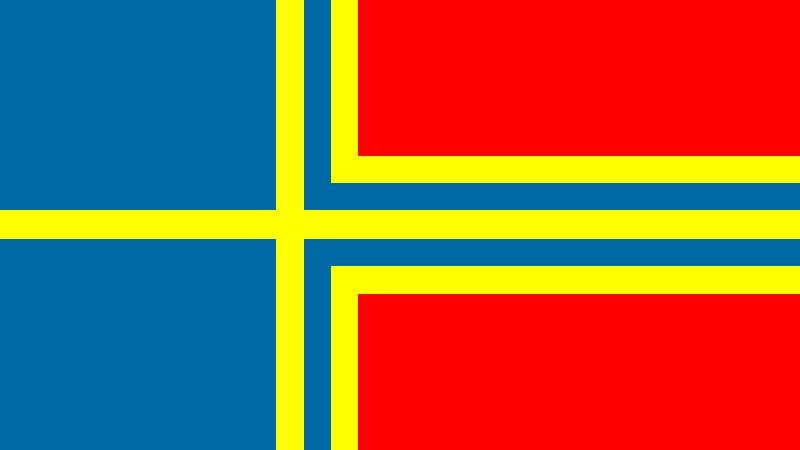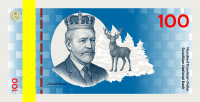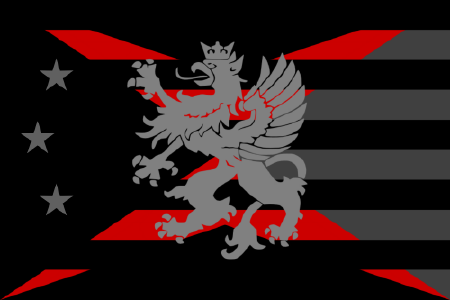Discover the Scuvika
Scandinavia's Best-Kept Secret Awaits
Perched at the northernmost tip of Norway, where the midnight sun meets the Northern Lights, lies the enchanting Kingdom of Scuvika – a progressive constitutional monarchy that perfectly blends Nordic tradition with modern innovation.
Natural Wonders Beyond Imagination
Experience the magic of 24-hour daylight in summer or dance under the aurora borealis in winter. Scuvika's dramatic Arctic landscape offers pristine fjords, untouched forests, and coastal cliffs that plunge into crystal-clear waters. Whether you're hiking under the midnight sun or dog-sledging through snow-covered valleys, every season brings new adventures.
Fruzholn: A Capital of Contrasts
Our vibrant capital seamlessly merges Viking heritage with cutting-edge sustainability. Wander cobblestone streets lined with 16th-century timber buildings, enjoy world-class dining at three Michelin-starred restaurants, or catch the colourful changing of the guard at the ceremonial Royal Palace. Modern districts showcase eco-friendly architecture, while the harborfront promenade serves up fresh Arctic seafood with stunning fjord views.
A Progressive Paradise
Under Prime Minister Aleksander Johansson's leadership, Scuvika has created one of the world's most egalitarian societies. Our unique blend of moderate social policies and innovative economic approaches ensures exceptional public services, pristine environments, and a legendary work-life balance that locals love to share with visitors.
Year-Round Adventures
Summer (May-July): Endless daylight, music festivals, sailing, and Midsummer celebrations
Autumn (August-October): Forest foraging, Northern Lights begin, spectacular fall colours
Winter (November-March): Dog sledging, cross-country skiing, ice fishing, Christmas markets
Spring (April-May): Vårfest celebrations, wildlife watching, the dramatic return of light
Culinary Excellence
Savour Arctic char, king crab, and cloudberry-glazed reindeer in settings from cosy cafés to starred restaurants. Don't miss the traditional "kaffepause" – our daily coffee break ritual featuring the world's fluffiest kanelbulle (cinnamon buns) and delicate krumkake cookies.
Practical Information
Currency: Scuvikian Dollar (SKD) – excellent value for visitors
Language: English is widely spoken alongside melodic Scuvikian
Payment: Cards accepted everywhere, even remote lodges
Best Practice: Book popular activities in advance to ensure availability
Why Visit Scuvika?
From Fruzholn's artistic streets to wild Arctic wilderness, from innovative cuisine to ancient traditions, Scuvika offers authentic experiences in Europe's last unspoiled frontier. Our approachable Royal Family, warm locals, and commitment to sustainable tourism create unforgettable memories for every traveller.
Whether seeking Arctic thrills, cultural immersion, or simply the joy of discovery, the Kingdom of Scuvika invites you to write your Nordic saga.
Visit Scuvika – Where Every Journey Becomes a Story
| National Factbook |
| Flag: |

|
| Nation Name: |
Scuvika |
| Leader Name: |
Aleksander Johansson |
| Currency: |

Scuvikian Dollar |
| National Animal: |

Bald eagle |
| History: |
The story of Scuvika begins in the mists of the 9th century, when Norse traders established settlements along the pristine fjords and valleys of what would become modern Scuvika. These early communities, isolated by mountainous terrain and dense forests, developed a distinct culture that blended Scandinavian traditions with indigenous practices.
By the 13th century, the disparate settlements had unified under King Magnus the Wise, who established the Kingdom of Scuvika in 1267. The monarchy flourished for centuries, with the small nation maintaining its independence through diplomatic cunning and the natural defences provided by its rugged geography. The Scuvikian royal family, House Lindqvist, became renowned for their patronage of arts and learning, establishing one of Europe's earliest public education systems in 1598.
The winds of change that swept across Europe in the early 19th century did not bypass Scuvika. Inspired by revolutionary ideals and Enlightenment philosophy, a growing merchant class and educated elite began demanding political reforms. Tensions escalated throughout the 1840s as King Karl III stubbornly refused any limitations on royal authority.
The pivotal moment in Scuvikian history came in 1847, during what is now known as the "March of Sorrow." A peaceful demonstration of merchants, students, and artisans in the capital turned violent when royal guards opened fire on the crowd. The three-day clash that followed left 52 dead and hundreds wounded. The shocking bloodshed prompted nationwide protests and brought the nation to the brink of revolution.
Faced with potential civil war, Crown Prince Gustav (later King Gustav I) broke with his father and negotiated directly with reform leaders. In a historic meeting at Grönvik Palace on March 28, 1847, the prince agreed to support a new constitution limiting royal power. The Constitution of 1848 transformed Scuvika into a constitutional monarchy, establishing an elected Parliament and guaranteeing fundamental rights. King Karl III abdicated in favour of his reform-minded son, who became the first constitutional monarch.
The early establishment of democratic institutions gave Scuvika a significant advantage. The nation granted universal male suffrage in 1870 and full universal suffrage in 1895, decades ahead of many European neighbours. When industrialisation began in the 1880s, Scuvika's mature parliamentary system enabled the peaceful passage of progressive labour laws and environmental protections.
The discovery of rare mineral deposits in 1903 brought new prosperity, which the democratic government wisely managed through public investment in education and infrastructure. Scuvika maintained neutrality during World War I while providing humanitarian aid. However, the rise of fascism in the 1930s and the threat it posed to democratic values compelled Scuvika to join the Allied cause in World War II in 1941, contributing its mineral resources and serving as a northern base for military operations. The post-war era saw the nation pioneer its unique model of "ecological socialism," combining strong worker protections with environmental stewardship, a tradition that continues under Prime Minister Aleksander Johansson today.
Today, under Prime Minister Aleksander Johansson's leadership, Scuvika stands as a testament to peaceful transformation, combining ancient traditions with progressive governance in one of Europe's most environmentally conscious nations. |
| Geography |
| Continent: |
Europe |
| Land Area: |
57,936.24 sq. km |
| Terrain: |
Scuvika's 2,000 square miles encompass some of Europe's most dramatic and pristine landscapes. The nation is dominated by the Njardvik Mountain Range, which runs north-south through the country's centre, with peaks reaching 8,200 feet at Mount Lindqvist. These ancient granite mountains, carved by millennia of glacial activity, create a natural spine that has historically divided Scuvika into distinct regions while protecting it from invasion.
The western coast features a spectacular series of deep fjords, including the renowned Kristalfjord, which penetrates 35 miles inland and plunges to depths of 1,300 feet. These fjords, flanked by cascading waterfalls and sheer cliff faces, provide natural harbours that have sustained fishing communities for over a thousand years. The largest, Königsfjord, hosts the capital city and main port, where mountains dramatically meet the sea.
East of the mountains lies the Grönvik Plateau, a region of rolling hills, pristine lakes, and vast boreal forests. This area contains Scuvika's famous "Emerald Forest," a 300-square-mile expanse of old-growth spruce, pine, and birch that has never been commercially logged. The plateau is dotted with over 200 glacial lakes, the largest being Lake Eriksson, spanning 15 square miles and reaching depths of 400 feet.
The nation's climate varies dramatically by elevation and proximity to the coast. Coastal areas enjoy a mild maritime climate moderated by warm ocean currents, with temperatures rarely dropping below 25°F in winter or exceeding 75°F in summer. The mountainous interior experiences a harsher alpine climate, with heavy snowfall from November through April. The eastern plateau has a continental climate with warm summers and cold, crisp winters.
Scuvika's mineral wealth lies primarily in the Silverdale Valley, where unique geological formations created deposits of rare earth elements, particularly scandium and yttrium. These deposits, formed by ancient volcanic activity, are extracted through environmentally conscious mining techniques that minimise surface disruption. The nation also possesses significant deposits of high-grade iron ore and copper in the northern mountains.
Rivers play a crucial role in Scuvika's geography. The Königsälv, the nation's longest river at 120 miles, flows from the central mountains through the Grönvik Plateau before emptying into the eastern border region. Its tributaries power numerous small hydroelectric stations that provide clean energy while maintaining minimum flow requirements for salmon runs.
Today, 47% of Scuvika's land area is designated as protected wilderness, with strict regulations preventing development. The National Parks system, established in 1952, encompasses the highest peaks, deepest fjords, and most ecologically sensitive areas. This commitment to conservation has preserved habitats for brown bears, wolves, lynx, and golden eagles, while the coastal waters support populations of seals, porpoises, and seasonal whale visitors. |
| Highest Peak: |
Mount Stjärnkrone,
2,500 meters
|
| Lowest Valley: |
Djupdal Valley,
87 meters
|
| Climate: |
Scuvika's climate is a study in contrasts, shaped by the complex interplay between maritime influences, mountainous terrain, and continental air masses. The nation experiences a modified oceanic climate along the coast, transitioning to subarctic conditions in the highest elevations, creating distinct microclimates that support remarkable biodiversity.
The western coastal region benefits from the moderating influence of the North Atlantic Current, an extension of the Gulf Stream. This warm water current keeps the fjords ice-free year-round and maintains surprisingly mild temperatures for such a northern latitude. Coastal winters average 0-4°C, while summers hover between 15-22°C. The maritime influence brings frequent precipitation, with the coast receiving 55-70 inches annually, mostly as rain. Morning fog is common in the fjords from September through November, creating ethereal landscapes that have inspired generations of artists.
The Njardvik Mountains create a dramatic rain shadow effect. As moisture-laden Atlantic winds rise over the western slopes, they release torrential precipitation—some areas receive over 100 inches annually. The eastern slopes and Grönvik Plateau, however, receive only 20-30 inches, creating a markedly drier continental climate. Winter temperatures on the plateau regularly drop to -20°C, while summer can bring warm spells reaching 27°C.
Scuvika experiences extreme seasonal variation in daylight. During the summer solstice, the nation enjoys nearly 20 hours of daylight, with the sun barely dipping below the horizon. This "white nights" phenomenon enables outdoor activities well past midnight and contributes to explosive plant growth during the brief growing season. Conversely, winter brings only 5 hours of daylight at the darkest period, though the long twilight hours and frequent displays of aurora borealis compensate for the darkness.
The nation's weather patterns follow distinct seasonal rhythms. Spring (April-May) arrives dramatically as warm winds rapidly melt mountain snows, feeding rushing rivers and awakening dormant vegetation. Summer (June-August) brings stable high-pressure systems, creating long stretches of mild, sunny weather perfect for hiking and outdoor recreation. Autumn (September-November) is characterised by dramatic storms as Arctic and Atlantic air masses clash, bringing the year's strongest winds and heaviest rainfall.
Winter (December-March) divides the nation climatically. Coastal areas experience a parade of Atlantic storms bringing rain and occasional wet snow, while the interior enters a period of stable cold with frequent temperature inversions that trap valleys in freezing fog while mountaintops bask in sunshine. The reliable snow cover from December through April has made Scuvika a destination for winter sports enthusiasts.
Climate change poses unique challenges for Scuvika. Average temperatures have risen 1.5°C since 1900, with warming most pronounced in winter. Glaciers in the high mountains have retreated significantly, and the tree line has crept upward by nearly 300 feet. The government has responded with aggressive carbon reduction policies, achieving carbon neutrality in 2019. Innovative adaptation strategies include floating gardens in fjord communities to handle rising sea levels and extensive reforestation programs to maintain the nation's role as a carbon sink. |
| People & Society |
| Population: |
4,327,188 people |
| Demonym: |
Scuvikian |
| Demonym Plural: |
Scuvikians |
| Ethnic Groups: |
Scuvikian - 78.4%
Njardi - 12.3%
Continental European - 6.7% |
| Languages: |
Scuvikian - 94.2%
German - 71.3%
Njardi - 15.8% |
| Religions: |
Non-religious/Secular - 52.7%
Lutheran Christianity - 31.4%
Njardi Spiritualism - 8.2% |
| Health |
| Life Expectancy: |
84 years |
| Obesity: |
14.3% |
| Alcohol Users: |
67.8% |
| Tobacco Users: |
11.2% |
| Cannabis Users: |
2.4% |
| Hard Drug Users: |
0.7% |
| Economy |
| Description: |
Scuvika's economy represents a unique model of ecological socialism that has evolved over 175 years of democratic governance. With a GDP of $370 million US Dollars and a per capita income of $354.70, the nation has achieved remarkable prosperity while maintaining stringent environmental standards and comprehensive social welfare.
The economy operates on principles of democratic socialism with significant public ownership. The state controls 62% of the economy through direct ownership of key industries, including mining, energy, transportation, and telecommunications. The Scuvikian National Mining Corporation (SNMC) manages the strategic rare earth element extraction that generates 31% of export revenue. These minerals, particularly scandium and yttrium, are essential for renewable energy technologies and command premium prices in global markets.
Private enterprise thrives in designated sectors, particularly tourism, craftwork, technology, and sustainable agriculture. Worker cooperatives comprise 23% of private businesses, supported by preferential government loans and tax incentives. The Mondragón-inspired cooperative model has proven especially successful in forestry, fishing, and light manufacturing. All private businesses with over 50 employees must allocate 30% of board seats to worker representatives.
The nation's energy sector exemplifies ecological socialism in practice. The state-owned Scuvika Energy Corporation operates 47 small-scale hydroelectric plants and 12 wind farms, providing 100% renewable electricity since 2006. Energy pricing follows a progressive structure: basic household needs are heavily subsidised, while luxury consumption faces steep charges. Industrial users receive allocations based on environmental efficiency ratings.
Employment policies reflect far-left principles. The 32-hour work week, implemented in 2015, maintains full wages while creating jobs and improving quality of life. Unemployment sits at 2.1%, with those seeking work guaranteed placement in environmental restoration projects at living wages. The national minimum wage of §28/hour ensures all workers can afford dignified living standards. Executive compensation in both public and private sectors cannot exceed 12 times the lowest-paid employee's salary.
The financial sector operates under strict regulations. The National Bank of Scuvika, beyond standard central banking functions, provides interest-free loans for worker cooperatives and green businesses. Commercial banking is dominated by credit unions and mutual societies, with speculative trading prohibited since 2009. The Scuvikian Dollar maintains stability through careful management and diversified reserves.
Tourism contributes 18% of GDP while adhering to strict sustainability limits. Annual visitor numbers are capped at 400,000 to preserve environmental integrity. Tourists pay substantial ecological fees that fund conservation programs. The emphasis on high-value, low-impact tourism attracts affluent nature enthusiasts willing to pay premium prices for authentic wilderness experiences.
The nation's tax system is steeply progressive, with top marginal rates of 78% on incomes above §500,000. Wealth taxes, carbon taxes, and land value capture fund generous social programs. Every citizen receives a basic income of §1,200 monthly, supplemented by universal healthcare, free education through university, and subsidised housing. Retirement at age 60 comes with full pension benefits equal to 85% of average lifetime earnings.
Despite—or perhaps because of—these left-wing policies, Scuvika maintains budget surpluses averaging 3.2% of GDP. The Sovereign Wealth Fund, established in 1978 and valued at §47 billion, ensures intergenerational equity. By prioritising human welfare and environmental health over GDP growth, Scuvika has created an economy that serves its people while protecting the pristine landscape that defines the nation. |
| Average Yearly Income: |
$141.89 |
| Gross Domestic Product (GDP): |
$8,293,370,957.00 |
| GDP per Capita: |
$1,916.57 |
| Gross National Income (GNI): |
$2,374,398,000.00 |
| Industries: |
Scuvika's industrial landscape reflects its commitment to ecological sustainability and worker welfare. The nation has deliberately chosen quality over quantity, developing specialised industries that leverage natural advantages while maintaining environmental integrity.
The crown jewel of Scuvika's economy, the state-owned SNMC operates three deep-shaft mines in Silverdale Valley. Using pioneering "green mining" techniques, including electric equipment, water recycling, and underground processing, these facilities extract scandium, yttrium, and other rare elements with minimal surface disruption. The adjacent processing plants employ 8,400 workers in high-skill positions, producing ultra-pure materials for global technology markets. All mining sites must maintain forested buffer zones and undergo continuous environmental monitoring.
Building on mining outputs, Scuvika has developed a thriving renewable energy sector. Four worker-owned cooperatives manufacture specialised components for wind turbines and solar panels, particularly high-efficiency generators using Scuvikian scandium alloys. The industry employs 12,300 workers and exports 78% of production. R&D facilities in the capital collaborate with universities to develop next-generation energy storage solutions.
Small-scale, high-value manufacturing thrives in converted historical buildings. Seventeen firms produce scientific instruments, medical devices, and aerospace components. The renowned Njardvik Optics Collective, founded in 1967, crafts specialised lenses for research telescopes worldwide. These enterprises emphasise apprenticeship programs, with master craftspeople training the next generation in traditional and cutting-edge techniques.
The Grönvik Forest Cooperative manages 180,000 acres of working forest using continuous cover forestry principles. Rather than clear-cutting, individual trees are selectively harvested to maintain ecosystem integrity. Six associated mills produce high-end furniture, musical instruments, and engineered wood products. The legendary Königsfjord violin workshop has crafted instruments for world-class musicians since 1893.
Scuvika's fjord-based aquaculture industry raises Arctic char, salmon, and kelp using innovative multi-trophic systems where fish waste fertilises seaweed growth. Traditional fishing cooperatives operate a small fleet of 47 vessels, adhering to strict quotas based on scientific assessments. Processing facilities in coastal towns employ 3,200 workers, producing premium seafood for domestic consumption and export.
A growing tech sector focuses on environmental monitoring systems and green software solutions. The state-backed Scuvika Digital Innovation Centre hosts 23 startups developing applications in clean-tech, biodiversity tracking, and sustainable supply chain management. The industry benefits from the nation's 100% renewable electricity and cool climate, ideal for data centres.
Two research institutes and five small pharmaceutical companies specialise in developing medicines from alpine plants and marine organisms. The Njardi Traditional Medicine Institute collaborates with indigenous knowledge holders to sustainably develop natural compounds. All bioprospecting follows strict benefit-sharing agreements with local communities.
While visitor numbers are capped, the tourism industry maximises value through premium experiences. Forty-three eco-lodges, ranging from restored farmsteads to architect-designed treehouses, offer intimate encounters with Scuvika's wilderness. Guide cooperatives provide expert-led expeditions, from glacier climbing to wildlife photography. The industry employs 8,900 people directly and supports numerous craft enterprises.
Scuvika punches above its weight in design and media. The national film studio has produced several internationally acclaimed documentaries on environmental themes. Seven publishing houses specialise in nature writing, children's literature, and academic texts. The capital's design district houses workshops producing everything from sustainable fashion to minimalist furniture, all bearing the coveted "Made in Scuvika" eco-certification that commands premium prices globally. |
| Military |
| History: |
Scuvika's military history reflects its transformation from a medieval kingdom to a modern democracy committed to peace while maintaining the capacity for self-defence.
Between 1267 and 1847, the Kingdom of Scuvika maintained a small standing army supplemented by a militia system, where all able-bodied men were required to train annually. The mountainous terrain and fierce winter conditions served as natural defences, allowing a modest force to repel the few invasion attempts. The Royal Guard, established in 1342, evolved from palace protectors to an elite mountain warfare unit. Naval troops consisted mainly of converted merchant vessels patrolling the fjords against pirates.
Between 1848-1914, the March of Sorrow fundamentally changed Scuvika's military. The new constitution placed armed forces under parliamentary control and prohibited their use against citizens. The military was professionalised and reduced from 12,000 to 4,000 active personnel. The Royal Scuvikian Navy was established in 1873 to defend strategic fjords.
Between 1914-1939, Scuvika declared neutrality in WWI, mobilising reserves to patrol borders while providing humanitarian aid. The military's successful deterrence validated the defensive strategy. Post-war reforms emphasised specialised mountain units and invested in modern communications. The small air force, founded in 1926 with twelve aircraft, focused on reconnaissance and self-defence.
Before World War II, Scuvika was initially neutral; however, it watched with alarm the rise of fascism in Europe. After Nazi Germany invaded Poland in September 1939, Parliament voted to join the Allies. The 10,000-strong Scuvikian Army conducted guerrilla operations in the mountains while the navy's battleships escorted Allied convoys. The "Mountain Ghosts" special forces unit gained fame for sabotaging German supply lines. Scuvikian rare earth minerals proved strategically vital for Allied technology. 1,247 Scuvikians died in combat, the nation's costliest conflict.
Post-war, Scuvika maintained armed neutrality. The military was restructured around territorial defence, with emphasis on rapid mobilisation rather than large standing forces. Today's Scuvikian Army comprises 210,000 reserves and 7,000 active service tanks. The Royal Scuvikian Navy operates a fleet of 70 ships, optimised for fjord defence. The Royal Scuvikian Air Force flies 1,050 multi-purpose aircraft.
Military service is compulsory in Scuvika. Citizens start their service during the year they reach 19 years old, and it lasts until the end of the year they reach 35 years old. The service includes a period of initial service and refresher training, with conscripts having the opportunity to specialise in areas like mountain rescue, environmental protection, and other additional services in peacetime. Conscription was introduced in 1823 for male citizens, but was extended to female citizens through the passing of an amendment in the National Service Act in 2003.
The military's secondary roles include disaster response, environmental monitoring, and supporting climate research in remote areas. This "dual-use" approach ensures defence capabilities while contributing to society during peacetime, embodying Scuvika's philosophy that true security comes from a strong democracy, social cohesion, and international cooperation. |
| Soldiers: |
108,000 |
| Tanks: |
13,500 |
| Aircraft: |
1,350 |
| Ships: |
90 |
| Missiles: |
0 |
| Nuclear Weapons: |
0 |
| Last Updated: 07/07/2025 11:46 am |



















